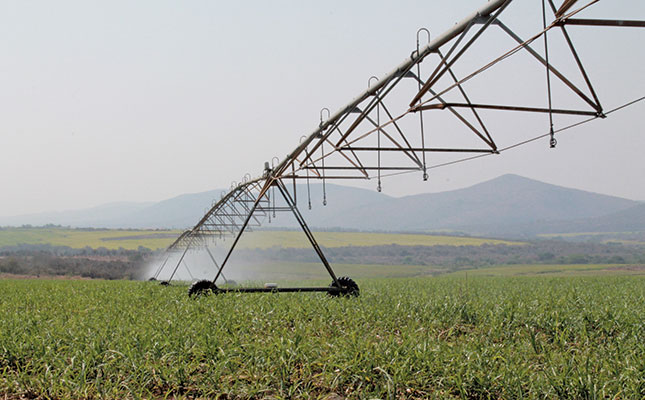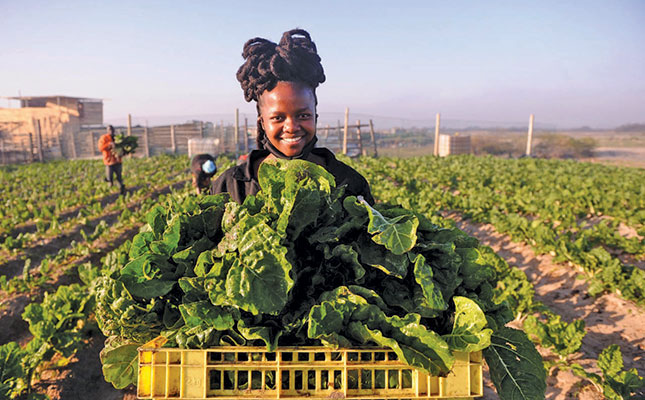
Photo: Wikimedia Commons
The Intergovernmental Panel on Climate Change (IPCC) released its latest climate report in August this year, and the picture it paints is grim. According to the report, there is now scientific consensus that climate change is linked to more frequent droughts and floods, and an increase in intensity of these climatic events.
However, the report also states that the situation can be turned around if we take swift action to drastically reduce the emission of carbon dioxide and other harmful gases into the atmosphere.
In May of this year, the International Energy Agency released its ‘Net Zero 2050’ report, which describes a pathway to achieve zero emissions by this date. The takeaway from the report is that in order to achieve emissions targets, no new coal- or gas-power-generation utilities can be developed. Aggressive phasing out of current coal and gas is also recommended.
The report sets ambitious milestones: by 2030, all old coal power stations should be decommissioned, and by 2040, the remaining coal and gas utilities must be retrofitted. By 2050, 90% of all energy should be generated through renewable sources.
Green finance
Moving a country from carbon-based power generation to renewables comes at a considerable cost, but it seemds as though funds are not difficult to come by.
At a recent webinar on green finance, Sean Kidney, CEO and co-founder of the Climate Bonds Initiative (CBI), said that the world was awash with money looking for green investment opportunities, and the US$100 trillion (about R1,43 quadrillion) global bond market was an excellent place to start.
Kidney added that South Africa, with its dependence on coal for power, was at risk as the world moved towards greener power. This was because carbon border tariffs from traditional trading partners were rising and would continue to do so. South African agricultural exporters would thus find it increasingly difficult to compete if the country’s emission profile did not improve.
However, South Africa was also in a unique situation amongst developing countries in that it could issue bonds in rands, due to its strong and well-developed financial markets. This would enable the country to mitigate the currency risks that came with issuing bonds in global currencies.
“South Africa has the potential to fund a green transition and be a world leader at the same time,’’ says Kidney.
What is a green bond?
Christelle van Vuuren, associate director at the Carbon Trust, explains that the key feature of a green bond is that the bond issuer has an obligation to apply the proceeds of the bond to projects and activities that have predetermined environmental benefits.
The bond issuer also has to report back to investors on what their capital has achieved.
According to Van Vuuren, green standards for the agriculture sector are in the process of being established.
They include the first draft of the South African Green Finance Taxonomy, which is currently under development, and the Agricultural Criteria launched by the CBI in August this year. These standards may be used by financiers and investors to decide whether an agricultural project, asset or activity would provide an environmentally sound investment.
Agriculture has an important role to play in the larger project of funding a greener future, as it is both a source of and a sink for emissions, according to Lini Wollenberg of the Consultative Group on International Agricultural Research, and lead technical adviser for the CBI in the project to develop agricultural standards for green bonds.
Quoting IPCC statistics, Wollenberg says that agriculture and associated land-use change are responsible for 16% to 27% of global emissions, but the land-use sector receives only about 2,5% of public mitigation finance. In the private sector, green bonds are focused overwhelmingly on power generation and transport, with 86% being allocated there, and only 0,9% going to land-use sectors such as agriculture.
According to the CBI, agriculture is particularly vulnerable to the effects of climate change, with global agricultural yields in danger of declining by between 10% and 50% by 2030 as a result.
Criteria for green bonds
The latest announcement on agricultural criteria for green bonds is an attempt to stimulate financial flow towards agricultural projects that will either mitigate emissions, or stimulate adaptation and resilience in food systems, according to a CBI report.
More clarity can now be gained on green bonds and opportunities that exist for the farming sector. The report describes qualifying, as well as non-qualifying, crops and activities for agricultural green bonds.
Qualifying crops and activities include perennial and non-perennial crop production. Examples are lucerne, fruit trees, oil palm, coffee, tea, cocoa, rubber, oilseeds, grains, paddy rice, sugar cane, soya bean and cotton. Livestock production also qualifies, with cattle, buffalo, sheep, goats, dairy, pigs and poultry, their waste and related grassland or pasture management all being included.
Excluded, or non-qualifying, from the agricultural criteria are controlled-environment agriculture, aquaculture and the farming of fish, and supply chain activities such as production and transport of purchased farm inputs, secondary processing or storage, distribution, packaging, handling and other logistics, and wholesale and retail markets.
The CBI also lists the agricultural activities that are eligible for the usage of the proceeds earned through a green bond. These may include capital- and operating-expenditure-related inputs such as land, seed, fertiliser, energy or information; capital goods such as land, equipment or housing; crop-based transformation processes such as crop cultivation and planted trees; agricultural outputs such as grains, vegetables, fibre, meat and dairy products; waste management such as composting, crop residue processing and recycling; and primary processing and storage before point of sale.
Many benefits for farmers
According to Van Vuuren, while individual farmers might not directly engage the debt capital markets, they need to ready themselves to be part of green portfolios and green investment opportunities.
“This could be done through inclusion in green bond portfolios and helping to grow interest in green loans and the burgeoning carbon offsets market, sustainable certification programmes, and opportunities for investment in ‘greened’ value chains,’’ she says.
The potential benefits of making these shifts include better cost of capital, as well as gaining access to new forms of capital and types of investors. Being part of green portfolios or green transactions could also bring reputational benefits, enhance relationships with financiers, and open opportunities for co-operation and growth.
Underpinning all of this, explains Van Vuuren, would be the operational resilience and marketing opportunities that farmers could achieve. Their operations would be better able to weather future crises and have the potential to sell green products and commodities.
Practical steps to take
On a practical level, Van Vuuren suggests that farmers prioritise measures such as sustainable and climate-resilient practices for the operational benefits these measures are likely to bring.
Farmers should make an effort to communicate their adopted practices to potential investors and presenters of green finance opportunities and, importantly, monitor these green initiatives to prove their worth.
“Financiers and customers want to understand what you’re doing on your farm,” she stresses.
It is no less important for farmers to measure non-financial performance, such as water usage and carbon emissions, as well as the results of improvement projects, says Van Vuuren.
Farmers should also engage in sectoral networks and developments such as the Sustainable Landscape Finance Coalition (SLFC), an initiative that brings together experts from the private and public sectors to find innovative financial solutions to support sustainable conservation across South Africa.
“In addition, keep track of what’s happening in the finance arena, such as the national Green Finance Taxonomy development. There might be opportunities depending on your situation.”
Candice Stevens, head of innovative finance and policy at the Wilderness Foundation and chairperson of the SLFC, agrees that there is an abundance of global capital for green investments. But the challenge lies in connecting the money through the correct instrument to the correct project.
“Financial products can be seen as toolboxes filled with different tools. You need to use the right tool for the specific need. A hammer will not work when a screwdriver is needed. The same applies to green bonds; you need to match the financial instrument with the financial and sustainability needs of the project.’’
Stevens warns that green bonds should not be seen as a tool that fits all needs. In addition, they may not be cheaper than regular bonds, and could therefore cancel out their main purpose, which is to promote green investments over traditional options.
That being said, there are many opportunities for the sector to invest in a greener future.
“Think about the opportunity to re-engineer the dairy industry for more efficient water and waste management, or an initiative to do energy transition projects that encompass an entire industry, such as citrus. All agriculture industries will benefit from more efficient water usage,’’ she says.
Farmers, she adds, should think of green bonds as one of many opportunities to gain access to finance for green projects.
“I support the Organisation for Economic Co-operation and Development’s position that positive tax incentives are the most effective tool to stimulate behavioural change. An example would be the new provision in our tax regime that allows for renewable energy projects to be deducted much sooner than the normal lifespan provision. Also consider the tax benefits that a farmer can access if portions of land are declared protected areas.”
Stevens adds that the CBI criteria for agriculture allow green bonds to be used for funding an activity outside of a production system that enables the production system to help mitigate climate change or enhance its climate resilience.
“This is a critical link to carbon payments and an integrated approach to green finance solutions in a sustainable agricultural landscape.’’
Email Lini Wollenberg at [email protected], Christelle van Vuuren at
[email protected], or Candice Stevens at [email protected].










